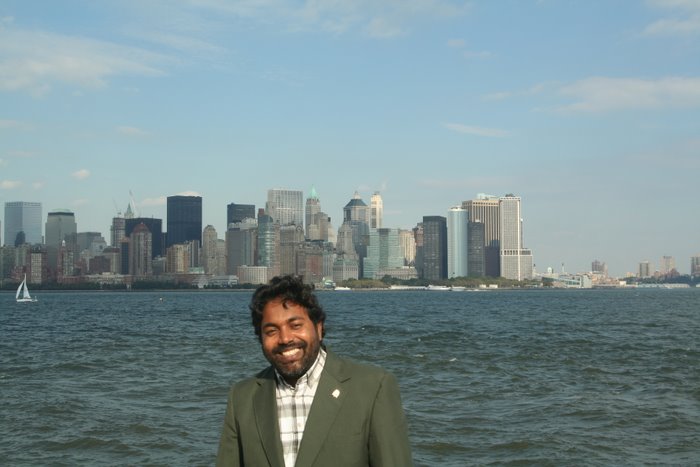This beautiful
painting depicts some of the Carmelites Saints before Our Lady of Mount Carmel and
the Child Jesus. (Left to right): the
Prophet Elijah; Andrew Corsini, Bishop and Peacemaker; Cyril of Constantinople;
Mary Magdalene de'Pazzi( kneeling); Brocard, the first Superior of Mount Carmel(kneeling);
Thérèse, The Little Flower; Simon Stock who received the scapular (kneeling);
Albert of Sicily(kneeling); Teresa of Jesus; Berthold, the Second Prior General
of the Carmelites(kneeling); Patriarch Peter Thomas; Angelus of Sicily.(Kneeling):
John of the Cross; and the Prophet Eliseus.
This painting was painted by Ariel Agemian (Haroutin
(Ariel ) Pascal Agemian (1904–1963)
was an Armenian artist who worked predominately in Italy.) Of Armenian descent,
Agemian was originally from in Brussa, Turkey and graduated from the Accademia
di Belle Arti di Venezia with a Gold Medal Award from the Associazione
Artistica in 1926. During the Armenian
Genocide, Agemiean witnessed his father get killed. He was then separated from
his family and sent to Venice for study. Up to 1931, he worked and taught in
Italy and from 1931 to 1938 in Paris. Agemian was a representative of the
school of academic realism and a skillful master of composition. He has painted
national themes reflecting the ancient as well as the contemporary history of
the Armenian people, frequently inspired by the distinct decorative-allegorical
paintings of the Italian Renaissance. Agemian was also a portraitist and a
landscapist. He has painted murals with spiritual as well as secular themes.
They can be found in Armenian Catholic and Eastern Rite Catholic Churches in
France, Italy, Turkey, and in America in New York City, Belmont, and Indian
Orchard, Massachusetts. In addition to those works, there are paintings in the Mekhitarist
College in Venice, the Monastery on the Island of San Lazzaro degli Armeni and
also several homes of friends in the U.S.A.. His artistic career started in
France. During the period 1931 to 1938, his paintings were widely exhibited in
Paris, Vienna, Venice, and Milan. He was primarily concerned with religious art
and profane subjects. He began to paint prolifically after resigning as art
professor at the College Moorat in Sèvres, France. Agemian’s mural technique
reflected the influence of Old Masters such as Titian. As time went on, he
showed himself to be versatile, equally at home with small compositions as well
as monumental murals. Subjects included portraits, still life, landscapes,
nudes, figures and battle scenes. His portraits were of dignitaries from the
political, religious, and entertainment world. They included Giovanni
Martinelli, Akim Tamiroff's wife, Louis Martin, Minister of the French Navy, Pope
Pius XI, and Cardinal Grégoire-Pierre Agagianian. He is most well known for the
"Face of Christ" painted in 1935 and based on the negative of the Shroud
of Turin.
Agemian, who was a
religious man, was still nourishing the seed of a priestly vocation. He also
wanted to spend some time in America and study the American people for a series
of tableaux on democracy. Thus his decision to spend several months in the United
States. This move in 1938 signaled the start of a new era for the young artist.
An art exhibit in 1939 in New York was described as one of the most
extraordinary assemblages to be seen on art gallery row in a long time. Critics
proclaimed that “the artist reveals a diversifying talent with the ability to
deal with formal organization; a nice color sense; and a generally romantic
approach” and that he was “obviously trained in European traditions of sound
craftsmanship.”.
Shortly after
Ariel Agemian arrived in America, he set up a studio in New York City where he
taught art to now famous artists, Erik Schmidt and Richard Mantia while he
continued to paint. He perfected the use of pastels on construction and working
with the dark to light concept with the Chiaroscuro effect. On black
construction he used white chalk and brought life from the black background.
Ariel married Maria Roxas in June, 1939. They had a son, Stefan, and a
daughter, Annig.
In 1943 Agemian
became an American citizen and began to work for Msgr.Joseph F. Stedman and
then Msgr. Frey who were directors of the Confraternity of the Precious Blood,
a publishing house for Catholic literature in Brooklyn, New York. Agemian
painted over 500 illustrations. They are in the books, My Daily Psalms, Christ
in the Gospel, The Imitation of Christ, My Meditation on the Gospel and My
Mass. His reproduction of Christ, from the Shroud of Turin, is considered the
most exact by experts in the scientific research field. After coming to
America, the artist’s technique and subject matter noticeably changed to purely
religious. Only a few portraits of dear friends were painted during the next
twenty years. He sketched daily, lived somewhat the life of a recluse and his
works were not displayed publicly again after 1939.
In 1958, Ariel
Agemian was given the highest honor bestowed upon a layman by the Catholic
Church. He was awarded a Gold Medal from Pope Pius XII and knighted into the Order
of Saint Gregory the Great. On March 10, 2012, Ariel Agemian was posthumously
awarded a distinguished alumni honor as an artist given by the Mekhatarian
Alumni Association in Toronto, Canada.
His legacy lives
on in his works. There have been several showings in the Grand Junction and Glenwood
Springs area in Colorado. Some religious works have been donated to museums in
New York City, Holy Cross Armenian Catholic Church in Belmont, MA;
St. Mark’s in Wynnewood, PA; St. Bernard’s Church in New Broomfield, PA; Collegio
Armeno in Rome; and Yerevan,
Armenia. In 2011, the painting Christ in the Temple, dedicated to the
"Son of God coming into the Temple" feast in the Armenian Apostolic
Church and Eastern Catholic Church, was donated to Anna Maria College in
Paxton, Massachusetts, also his daughter's alma mater. The majority of works
done in America have been in the private collection of Howard and Annig Agemian
Raley in Glenwood Springs, Colorado. (From Wikipedia).





No comments:
Post a Comment